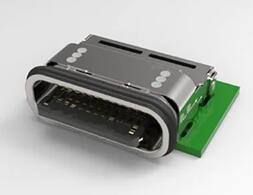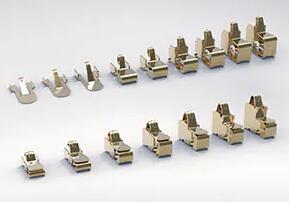Manufacturers
- Abracon
- Adam Tech
- Aerospace, Defense & Marine
- Agastat
- AIC
- AKM Semiconductor
- Alcoswitch
- Allegro
- Alps Electric
- Altera
- AMI Semiconductor
- AMP
- ams
- Analog Devices (ADI)
- Aptina Imaging
- Atmel
- Avago / Broadcom
- AVX
- Axicom
- Bccomponents
- Beyschlag
- BI Technologies
- Bourns Inc.
- Bowei Integrated Circuits
- Bridgelux
- Buchanan
- California Micro Devices
- Catalyst Semiconductor
- CGS
- Cirrus Logic
- Citizen Electronics
- CML Microcircuits
- Coiltronics
- Cooper Bussmann
- Corcom
- Core Logic
- Cree
- CSR PLC
- CTS
- Cypress Semiconductor
- Dale
- Data Image
- Deutsch
- Diodes Incorporated
- DOMINANT Opto Technologies
- E-T-A
- Eaton
- ECS
- Edison Opto
- Elcon
- EPCOS
- Epistar
- Epson
- Everlight Electronics
- Exar
- Fairchild Semiconductor
- FCI
- Freescale Semiconductor
- Fremont Micro Devices (FMD)
- Fujitsu Semiconductor
- Fulltech Electric
- General Semiconductor
- Harvatek
- Holsworthy
- Hsuan Mao Technology
- IDT
- Infineon Technologies
- Innolux
- International Rectifier (IR)
- Intersil
- IRC
- ISSI
- IXYS-IC
- Jing Cheng Electronical
- JL World
- Johanson Dielectrics
- Johanson Technology
- JRC / NJR
- JST
- KEC
- Kilovac
- Kingbright
- Kyocera Industrial Ceramics
- LEDiL
- Linear Technology / ADI
- Lite-On Technology
- Littelfuse
- Lumex
- Lumileds
- Luminary Micro
- Luminus Devices
- Macronix
- Maojwei / ZJPT
- Maxim Integrated
- MCC
- Mean Well Enterprises
- Microchip Technology
- Micron
- Microsemi
- Mini-Circuits
- Molex
- Murata Manufacturing
- Murata Power Solutions
- MWT
- National Semiconductor
- Nichicon
- Nippon Chemi-Con
- NJR / JRC
- NVE
- NXP Semiconductors
- OEG
- Omnivision
- ON Semiconductor
- Optek Technology
- Optrex
- OSRAM Opto Semiconductors
- OTAX
- Panasonic
- Peregrine(pSemi)
- Potter & Brumfield
- Power Integrations
- PowerStor
- Preci-Dip
- Prewell
- Products Unlimited
- Pulse Electronics
- PulseCore Semiconductor
- Qorvo
- Raychem
- Renesas Electronics
- RFMD
- Richtek Technology
- ROHM Semiconductor
- Rubycon
- Samsung Electro-Mechanics
- Samsung Semiconductor
- Schaffner
- Schrack
- Seiko Instruments, Inc. (SII)
- Semtech
- Sensata
- Seoul Semiconductor
- Sfernice
- Sharp Display
- Sharp Microelectronics
- Silicon Labs
- Siliconix
- Skyworks Solutions
- SoniCrest / JL World
- Spansion
- Sprague
- Stanley Electric
- STMicroelectronics
- Sunny Electronics
- Susumu (SSM)
- Taimag
- Taiyo Yuden
- TDK
- TDK-Lambda
- TE Connectivity
- Teccor
- Texas Instruments (TI)
- Thin Film
- Tianma Micro-electronics
- TOCOS
- TOKO
- Toshiba Electronic Components
- TT Electronics
- Tusonix
- TXC
- Tyntek
- Vishay
- Vishay Precision Group
- Vitramon
- Walsin Technology
- Weidmuller
- Welwyn
- Wickmann
- Winbond
- Xilinx
- Yageo
- Zetex Semiconductors
- ZJPT / Maojwei
뉴스
TE Connectivity offers manufacturers considerations for smart IoT device miniaturization challenges
2022-07-27 | 반환
MIDDLETOWN, Pennsylvania – July 27, 2022 - Electronic devices are increasingly being connected to the world through one or more wireless technologies. Mobile phones, computers, televisions, video games, watches, vacuum cleaners and coffee machines offer just a few of many examples. As demand accelerates, it is predicted that by 2025, more than 75 billion devices will be connected. For manufacturers, this rapid move toward a hyper-connected world presents a great opportunity, but also significant challenges.
The integration of multiple wireless technologies into smart IoT devices raises a range of design obstacles, given environmental requirements such as the need to be waterproof and withstand high temperatures, shock and vibration. Rugged and robust designs, miniaturization, long battery life, and high performance are all critical factors that allow these devices to deliver reliable, seamless connectivity.
In its latest white paper and upcoming webinar, "Miniaturization Considerations for Smart Internet of Things (IoT) Devices,” TE Connectivity (TE), a global leader in antennas, connectors, and sensors, addresses challenges related to miniaturization and offers design considerations for overcoming them with a focus on antenna design, PCB connectors, and associated components.
“Approaching the design phase with a holistic view of the impact of all components—including antennas and PCB connectors—is a critical step to avoiding unanticipated performance issues that can result in late-stage design changes, higher expense, and delayed time to market,” said Irfan Yousaf, TE antenna solutions expert. “Oftentimes, manufacturers rely on specifications to determine their antenna selection, but what needs to be considered early in the process are factors such as ground plane dimensions, distance to nearby components, antenna position, PCB layout, and component selection. All of these can have a significant impact on device performance and reliability, and in some cases, a custom antenna solution is required.”
TE Product Manager David Currie commented, “One of the main drivers for miniaturization is the continually decreasing PCB size in IoT applications. Given reduced board real estate, engineers require products with a compact form factor. The smaller the connectors are, the more that can fit into a reduced space, which increases the utility of the board. ”PCB clearance is also a driving factor. Not only are PCBs smaller, but increasingly there are more per application that need to be packed into a cavity that may have a unique or very thin shape. Connector protrusion of a board then becomes an important consideration, making low profile connectors a choice solution.”
As the demand for smaller smart devices increases, so too does the need for even more miniaturized components that perform reliably and in harmony with other device components. TE’s webinar will be held Aug. 25 at 10 a.m. EST. A live question and answer session will immediately follow.
For more information:
● Read the white paper (te.com/mini-iot)
● Register for the webinar:https://register.gotowebinar.com/register/5240737935444344845
● Learn more about TE’s IoT capabilities at Te.com/IoT

Example of a U-shaped MetaSpan antenna from TE that combines cellular, Bluetooth, and GNSS antennas into a single block

Spring finger single-contact, surface-mountable internal connectors
Source: https://www.te.com





